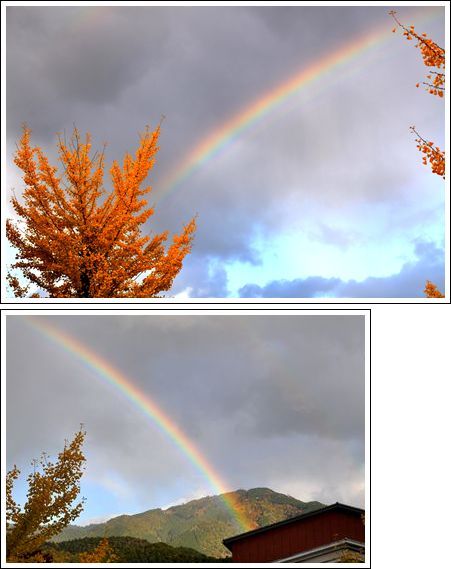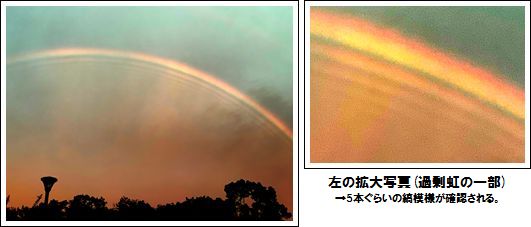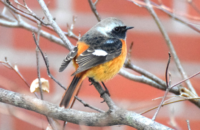
地球からはるか1億5000万km離れている太陽から約8分かけて地球に届く太陽光と、岩倉という町を包む大気に浮かぶ水滴が織りなす”レア現象”が観察されました。
右の写真の上2つは、11月9日の午後3時50分頃の写真です。中学校地の北東方向に虹が確認されたので撮影に向うと、主虹の内側に連続的に縞模様が観測されました。これを『過剰虹』(supernumerary bows)といいます。観測してすぐに北側から消え始め、最後はチャペルの屋根に吸い込まれるようにして、約5分間の光のSHOWは幕を閉じました。
一方、下2つの写真は、11月2日午前6時20分頃の写真です。この時は日の出の「朝焼け」と重なり、赤みががった見事な『過剰虹』でした。日の出の時間なので、虹は太陽とは反対側の南西から北西方向にア-チを作り、この時は主虹の内側に”5本”ほどの明暗の筋が確認できました。

では、この『過剰虹』はどのようにしてできるのでしょうか。普通の虹は、プリズムのように水滴の中を光が屈折・反射する際の波長の違いでそれぞれの色に分解されます。その時、光の光路が微妙にズレる光があると、光どうしが「干渉」を起こし縞模様が出来るのです。縞の間隔は水滴の大きさによるようです。このようなことから『干渉虹』(interference bows)とも呼ばれます。
Light from the Sun, which is 150,000,000 away from the Earth, takes about 8 minutes to reach the sky above Iwakura and blend with the droplets of water in the atmosphere to produce a spectacular phenomenon.
The top 2 photos on the right were taken at around 3:50pm on November 9th. When I went to take a photo of the rainbow to the northeast of the school, I saw that there was what is known as “supernumerary bows” on the inner side of the rainbow. The rainbow slowly disappeared from the northern side and seemed to be absorbed by the roof of the chapel as it faded away.
The lower 2 photos were taken at around 6:20am on November 2nd. Here we could also see supernumerary bows, slightly shaded with red in the glow of the morning sky. Because it was in the morning, the rainbow was in the opposite direction to the sun, arching from the southwest to the northwest. Within the rainbow, we could clearly see about 5 bows.
So, how do these rainbows form? A normal rainbow appears when light passes through droplets of water that form a prism, producing the different colors. When the path of the light is slightly deviated, it causes an “interference” which produces other lines or bows on the inside of the rainbow. These are called “interference bows”, and they can appear depending on the size of the water droplets.



